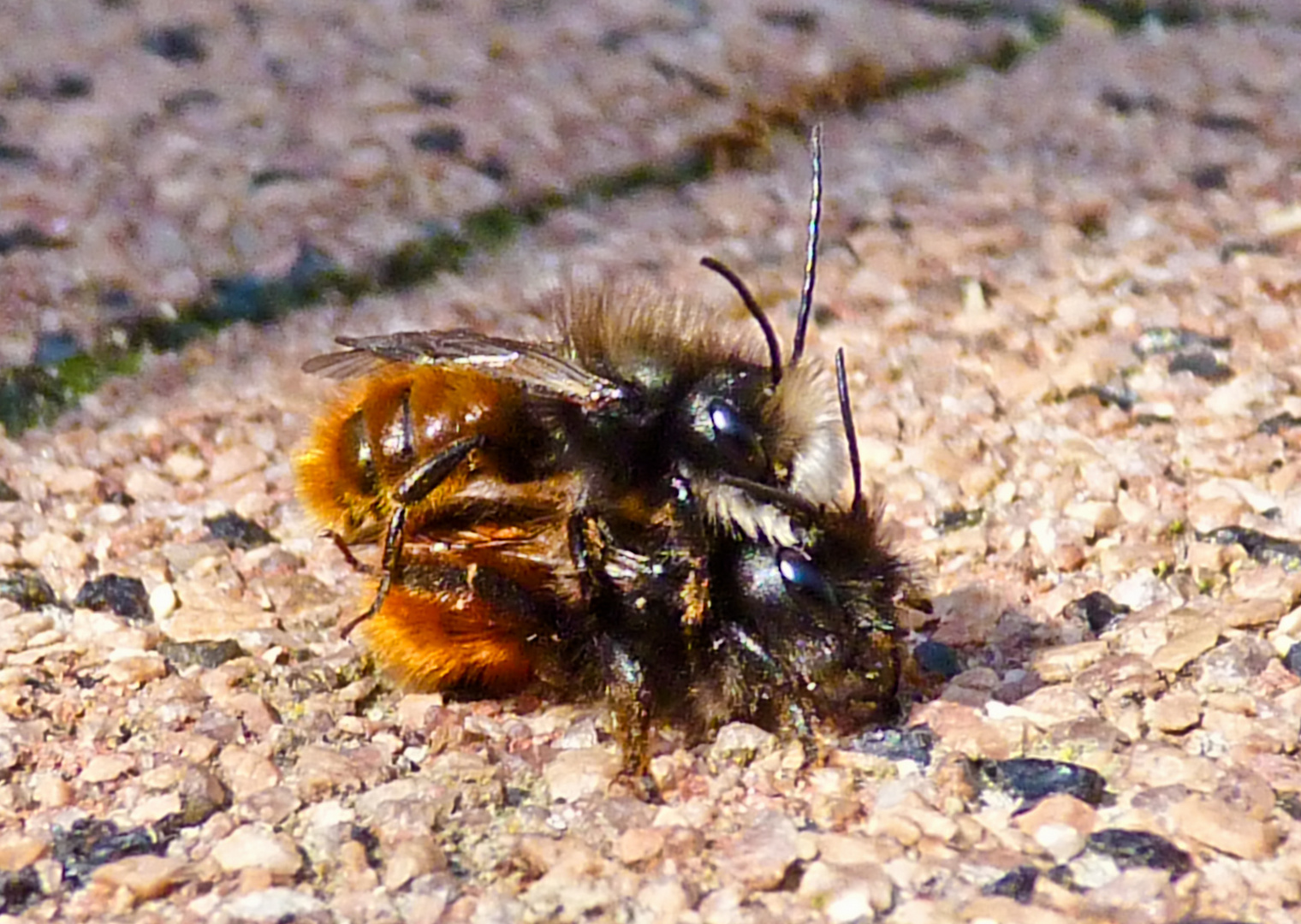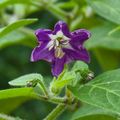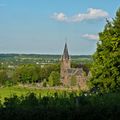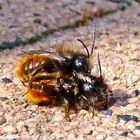Mating Hornfaced Bees
Info: What you should know about these Solitary Mason Bees.
A friendly Bee for children and pets.
Spring mason bees (blue orchard and hornfaced) are increasingly cultivated to improve pollination for early spring fruit flowers.
They are used sometimes as an alternative, but more often as an augmentation for European honey bees.
Most mason bees live in holes and are readily attracted to nesting holes; reeds, paper tubes, or nesting trays.
Drilled blocks of wood are an option, but do not allow you to harvest the bees, which is vital to control a build up of pests.
Blue orchard and Hornfaced bees are spring season pollinators and will only sting if squeezed or stepped on. As such, they are beneficial and benign, since they both pollinate the plants and are safe for children and pets.
Life cycle:
Hornfaced bee / Osmia cornifrons
Unlike honey bees (Apis) or bumblebees, Osmia are solitary;
every female is fertile and makes her own nest, and there are no worker bees for these species.
Solitary bees produce neither honey nor beeswax.
They are immune from acarine and Varroa mites, but have their own unique parasites, pests and diseases.
The bees emerge from their cocoons in the spring, with males the first to come out. They remain near the nests waiting for the females. When the females emerge, the first thing they do is mate. The males die and the females begin provisioning their nests.
Osmia females like to nest in narrow holes or tubes, typically naturally occurring tubular cavities. Most commonly this means hollow twigs, but sometimes abandoned nests of wood-boring beetles or carpenter bees, or even snail shells. They do not excavate their own nests.
The material used for the cell can be clay or chewed plant tissue. The palearctic species O. avosetta is one of a few species known for lining the nest burrows with flower petals. A female might inspect several potential nests before settling in.
Females then visit flowers to gather pollen and nectar, and it will take many trips to complete a pollen/nectar provision mass. Once a provision mass is complete, the bee backs into the hole and lays an egg on top of the mass. Then she creates a partition of "mud", which doubles as the back of the next cell. The process continues until she has filled the cavity. Female-destined eggs are laid in the back of the nest, and male eggs towards the front.
Once a bee has finished with a nest, she plugs the entrance to the tube, and then may seek out another nest location.
By the summer, the larva has consumed all of its provisions and begins spinning a cocoon around itself and enters the pupal stage, and the adult matures either in the fall or winter, hibernating inside its insulatory cocoon. Most Osmia species are found in places where the temperature drops below 0°C for long durations, like Canada, and they are well-adapted to cold winters.
Help:
You can help too, by drilling holes in wood between 2mm and 10mm or buying a Bee Hotel.
Hang the Hotels in a place where they get morning Sun.











Commenti 0
Cancella commento
Eliminare commento e risposte